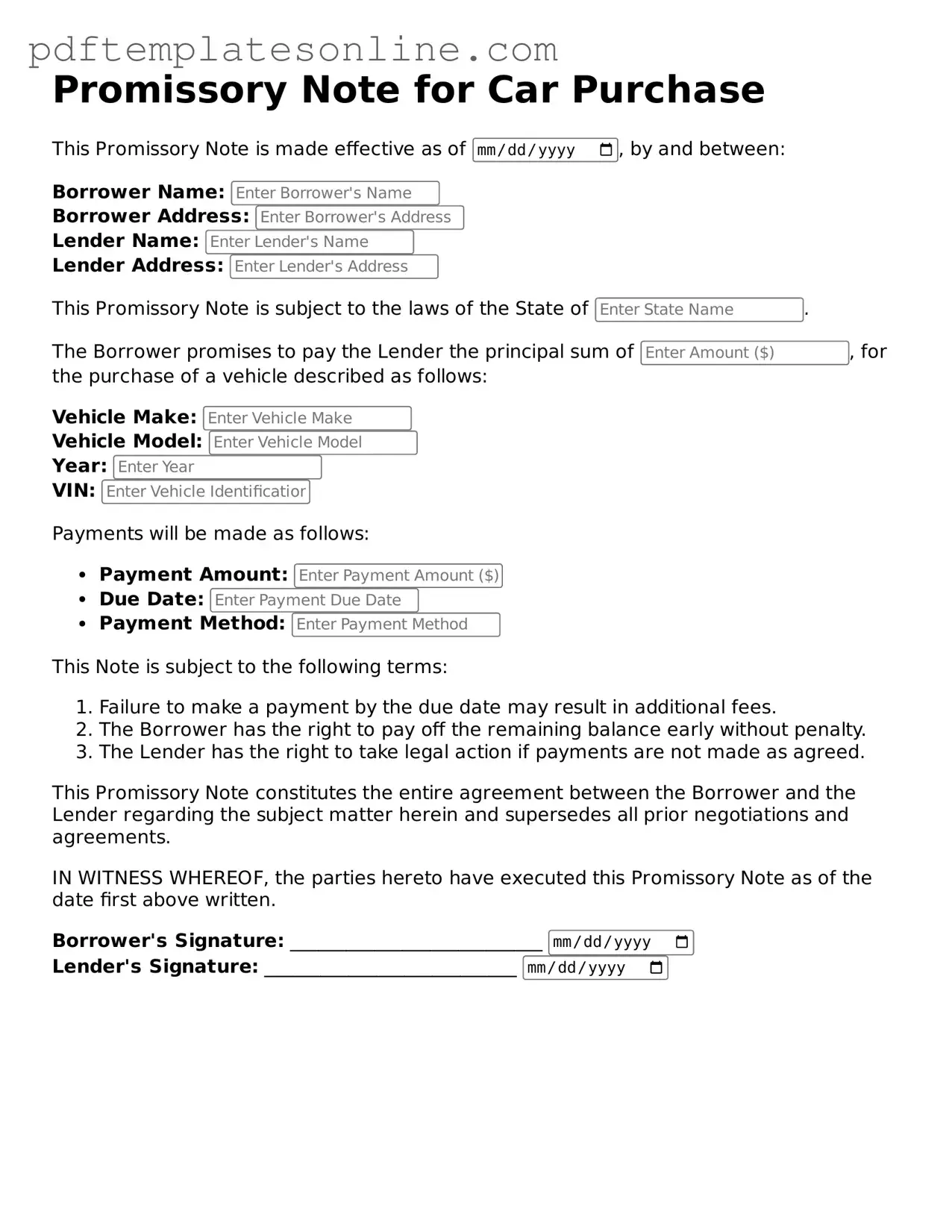When filling out a Promissory Note for a car, individuals often make several common mistakes that can lead to complications later on. One significant error is failing to include all necessary parties involved in the transaction. It's crucial to list both the borrower and the lender accurately. Omitting one party can create confusion and potential legal issues if disputes arise.
Another frequent mistake is neglecting to specify the loan amount clearly. While it may seem straightforward, some people write vague terms or forget to include the total sum borrowed. This lack of clarity can lead to misunderstandings regarding repayment expectations.
Additionally, individuals sometimes overlook the interest rate or fail to define it properly. A Promissory Note should clearly state whether the interest is fixed or variable, as well as the specific percentage. Ambiguities in this section can cause disputes over how much is owed over time.
People often forget to include the repayment schedule. This schedule should detail when payments are due and how much each payment will be. Without this information, it can be challenging for both parties to keep track of payments, leading to missed deadlines and possible penalties.
Another common oversight is not signing the document. A Promissory Note is not legally binding unless it is signed by both parties. Failing to obtain signatures can render the entire agreement unenforceable, leaving the lender without legal recourse if the borrower defaults.
Moreover, some individuals neglect to include the consequences of defaulting on the loan. This section should outline what happens if the borrower fails to make payments. Without this information, the lender may find it difficult to enforce their rights if issues arise.
Lastly, many people forget to keep a copy of the signed Promissory Note for their records. Having a copy is essential for both parties to reference in case of disputes or misunderstandings. Without it, proving the terms of the agreement can become challenging.
